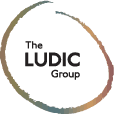Notes from another Reality.
We were visited this week by the "marketing innovation team" of a top brand three letter acronym automobile manufacturer. It had been a rather strange and wonderful introduction. Some weeks before one of our students had managed to secure a research internship with this company - his remit being to assist them to create the means, methods and capabilities to transfer creativity into the organisation. No small challange! At the same time a friend who has worked with us previously as a journalist and editor put her friend in touch with me. Her friend is a freelancer and was interested in working with the Juice Network. A little later she contacted me, full of pleasure, because she had been given our names by her client to contact us for a totally different reason.
Turns out she is a London Scout for the trend organisation
CSCOUT. CSCOUT had been engaged by the automobile manufacturer to take some of their top team to meet and experience the hot trends in London. We are pleased to be on the map - long may it last.
While in London their visit included the BlueWater Shopping Mall, spent time with the Adam Street Club Network SoFlow , visited us at the LSE, visited a management consultancy's creative space EDS-BOX and had a tour of The Hospital
The Hospital.
Their questions were about transferring creativity into an organisation, and the documentation of creative events, and networks.
We introduced them to:
- Thorsten Roser - a PhD student working on knowledge networks
- Dr Miguel Imas - Miguel works on narratives, storytelling and architecture for skateboarders
- Prof Patrick Humphreys - Patrick is Director of the Institute of Social Psychology
Institute of Social Psychologyl and Director of the London Multi-Media Lab
London Multi-Media Lab- Paul Ashcroft - a partner in the Ludic Group
The Ludic Group- Liz Faber - a partner in Push Digital
Push Digital- Vivien Goldburg - PhD student working on play in organisations
- John Thackera - Director of Doors of Perception and author of numerous books including just published In the Bubble
In the BubbleA lively conversation ensued amongst the academics, we had many questions from the "Marketing Innovators", and of course the experience generated many more questions than it answered. The client was clearly looking for a rational methodology and tool that could ensure creativity (process, content) would flow into the organisation. Is this possible? What about Creative Events? How should they be conducted? Should they be conducted at all? How should they end? What about working beyond just the event? Is this another failed utopia? Can any Creative Process be rational? Can creativity be taught? How can these things be documented? What are the processes that ensure creative outcomes? Are these possible in an engineering, driven, corporate context? What is the definition of Creativity? How does narrative and storytelling drive creativity? What about Creative Environments? Is contextual functionality enough? Isn't the Question that is asked of a diverse group more important?




 subscribe to our feed
subscribe to our feed